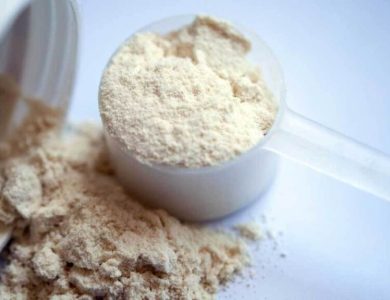Asthma is a chronic respiratory condition that affects millions of people worldwide. Effective management of asthma is crucial to ensure that individuals can lead active and healthy lives. One of the most important tools in managing asthma is the inhaler. With various types of inhalers available, choosing the right one can be challenging. This step-by-step guide will help you navigate the process of selecting the most suitable asthma inhalers for your needs, considering factors such as type, ease of use, and your specific asthma management plan.
Understanding Asthma and the Role of Inhalers
What is Asthma?
Asthma is a chronic inflammatory disease of the airways that causes episodes of wheezing, breathlessness, chest tightness, and coughing. These episodes can be triggered by various factors, including allergens, exercise, cold air, and respiratory infections. Asthma symptoms can vary in severity and frequency, and they require careful management to prevent exacerbations and maintain a good quality of life.
The Importance of Inhalers in Asthma Management
Inhalers are the primary method of delivering asthma medication directly to the lungs. This targeted approach allows for rapid relief of symptoms and long-term control of inflammation, making inhalers an essential component of asthma management. Inhalers come in different types and forms, each designed to deliver specific medications for immediate relief, maintenance, or both.
Understand the Different Types of Inhalers
Asthma inhalers can be broadly classified into three main categories: reliever inhalers, preventer inhalers, and combination inhalers. Each type serves a distinct purpose in managing asthma.
Reliever Inhalers
Reliever inhalers are also known as rescue inhalers. They contain fast-acting bronchodilators that quickly relax the muscles around the airways, making it easier to breathe. Reliever inhalers are used during an asthma attack or when symptoms such as wheezing, shortness of breath, or chest tightness occur.
- Short-Acting Beta-Agonists (SABAs): The most common type of reliever inhaler, containing medications like albuterol (Ventolin, ProAir) and levalbuterol (Xopenex). They work within minutes and provide relief for 4-6 hours.
- Anticholinergics: These inhalers, such as ipratropium (Atrovent), are sometimes used as an alternative to SABAs or in combination with them. They work by blocking the neurotransmitter acetylcholine, which helps prevent airway constriction.
Preventer Inhalers
Preventer inhalers contain long-acting medications that reduce inflammation in the airways and prevent asthma symptoms from occurring. These inhalers are used daily, even when symptoms are not present, to maintain control over asthma.
- Inhaled Corticosteroids (ICS): The most common preventer inhalers, containing medications like fluticasone (Flovent), budesonide (Pulmicort), and beclomethasone (Qvar). They work by reducing inflammation and mucus production in the airways.
- Long-Acting Beta-Agonists (LABAs): These are often combined with corticosteroids in a single inhaler. Examples include salmeterol (Serevent) and formoterol (Foradil). LABAs help keep the airways open over a longer period.
- Leukotriene Receptor Antagonists (LTRAs): Less commonly used as inhalers, but some combination inhalers may include LTRAs. They help reduce inflammation by blocking leukotrienes, which are chemicals in the body that cause asthma symptoms.
Combination Inhalers
Combination inhalers contain both a long-acting bronchodilator and an inhaled corticosteroid. These inhalers are designed to provide both immediate relief and long-term control, reducing the need for multiple inhalers. Common examples include:
- Fluticasone/Salmeterol (Advair)
- Budesonide/Formoterol (Symbicort)
- Mometasone/Formoterol (Dulera)
Consider Your Asthma Severity and Frequency
Mild Intermittent Asthma
For individuals with mild, intermittent asthma, symptoms occur less than twice a week, and nighttime symptoms are infrequent. In this case, a reliever inhaler such as a SABA may be sufficient for managing symptoms when they arise. Regular use of a preventer inhaler is usually not necessary.
Mild Persistent Asthma
Mild persistent asthma involves symptoms more than twice a week but not daily. Nighttime symptoms may occur more than twice a month. For these individuals, a preventer inhaler with a low-dose inhaled corticosteroid is often recommended in addition to a reliever inhaler for acute symptoms.
Moderate Persistent Asthma
In moderate persistent asthma, symptoms occur daily, and nighttime symptoms are more frequent. A combination inhaler that includes both a corticosteroid and a long-acting bronchodilator is often recommended to provide both symptom relief and long-term control.
Severe Persistent Asthma
Severe persistent asthma involves symptoms that occur throughout the day and are accompanied by frequent nighttime symptoms. These individuals often require a high-dose combination inhaler and may also benefit from additional therapies, such as biologic medications, which target specific pathways in the immune system.
Evaluate the Inhaler’s Ease of Use
Metered-Dose Inhalers (MDIs)
MDIs are the most common type of inhaler and are used by pressing down on the canister to release a puff of medication. The user must coordinate their inhalation with the release of the medication, which can be challenging for some people, especially children and the elderly.
- Pros: Portable, convenient, and effective for delivering medication quickly.
- Cons: Requires good coordination and timing to use correctly.
Dry Powder Inhalers (DPIs)
DPIs deliver medication in the form of a dry powder. The user inhales rapidly and deeply to draw the powder into the lungs. DPIs do not require the same level of coordination as MDIs, making them easier to use for some patients.
- Pros: Easier to use for patients with difficulty using MDIs, no need for propellants.
- Cons: Requires a strong inhalation effort, which may be challenging during a severe asthma attack.
Soft Mist Inhalers (SMIs)
SMIs deliver medication as a fine mist that is slowly released, making it easier to inhale. These inhalers are newer and are designed to provide a more consistent and easy-to-use delivery of medication.
- Pros: Easy to use, delivers a fine mist that stays airborne longer for better lung deposition.
- Cons: More expensive and less widely available than MDIs and DPIs.
Nebulizers
Nebulizers are devices that turn liquid medication into a fine mist that can be inhaled through a mask or mouthpiece. Nebulizers are often used for young children, the elderly, or individuals with severe asthma who cannot use other types of inhalers.
- Pros: Easy to use, no need for coordination, effective for delivering large doses of medication.
- Cons: Bulky, time-consuming, and requires a power source.
Consider the Medication Delivery System
Spacers and Valved Holding Chambers
Spacers are devices that attach to MDIs to make it easier to inhale the medication. They help to reduce the amount of medication deposited in the mouth and throat, increasing the amount that reaches the lungs.
- Pros: Improves medication delivery, reduces side effects, easier to use with MDIs.
- Cons: Adds bulk to the inhaler, may be less portable.
Breath-Activated Inhalers
Breath-activated inhalers automatically release medication when the user inhales. This eliminates the need for coordination and can be easier for patients who have difficulty using traditional MDIs.
- Pros: Easier to use, no need for timing or coordination.
- Cons: May require a stronger inhalation effort, limited availability.
Discuss Your Options with a Healthcare Provider
Individualized Asthma Action Plan
Your healthcare provider will help you create an asthma action plan tailored to your specific needs. This plan will outline the medications you need, when to use them, and how to monitor your symptoms. It’s important to discuss your lifestyle, preferences, and any challenges you face with using inhalers to ensure you choose the best option.
Consider Potential Side Effects
Different inhalers and medications may have different side effects. Inhaled corticosteroids, for example, can cause oral thrush if proper inhaler technique is not followed. Discuss potential side effects with your healthcare provider and learn how to minimize them.
Regular Monitoring and Follow-Up
Asthma is a dynamic condition, and your symptoms may change over time. Regular follow-up with your healthcare provider is important to monitor your asthma control and make any necessary adjustments to your inhaler or medication regimen.
Practice Proper Inhaler Technique
Get a Demonstration
Ask your healthcare provider or pharmacist to demonstrate how to use your inhaler correctly. Many people do not use their inhalers properly, which can reduce the effectiveness of the medication.
Practice and Ask Questions
Practice using your inhaler and ask questions if you’re unsure about any part of the process. Proper technique is essential for ensuring that you get the full dose of medication and achieve the best possible asthma control.
Regularly Check Your Inhaler
Inhalers need to be checked regularly to ensure they are working properly and that they have not expired. Replace your inhaler as recommended by your healthcare provider.
Conclusion
Choosing the right asthma inhalers is a crucial step in effectively managing your asthma. By understanding the different types of inhalers, considering your asthma severity and frequency, evaluating ease of use, and discussing your options with a healthcare provider, you can find the inhaler that best suits your needs. Regular follow-up and proper inhaler technique are also essential for maintaining good asthma control and leading a healthy, active life.




